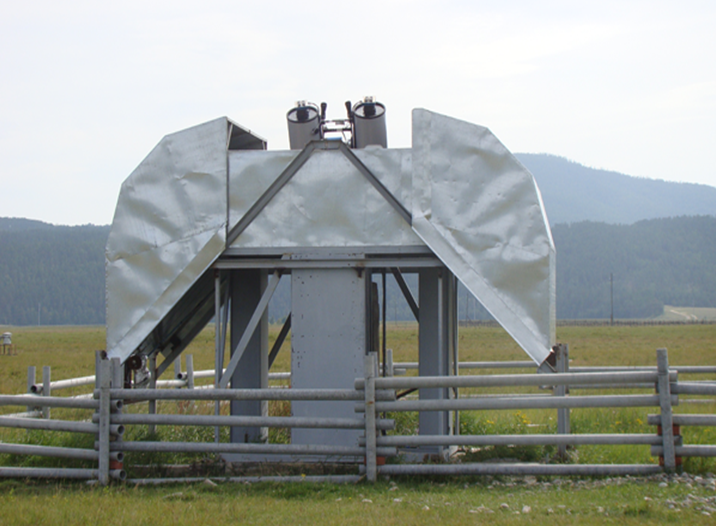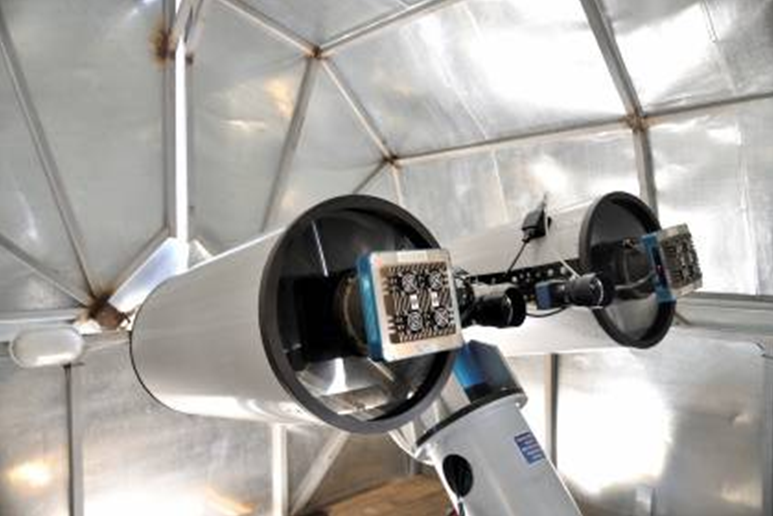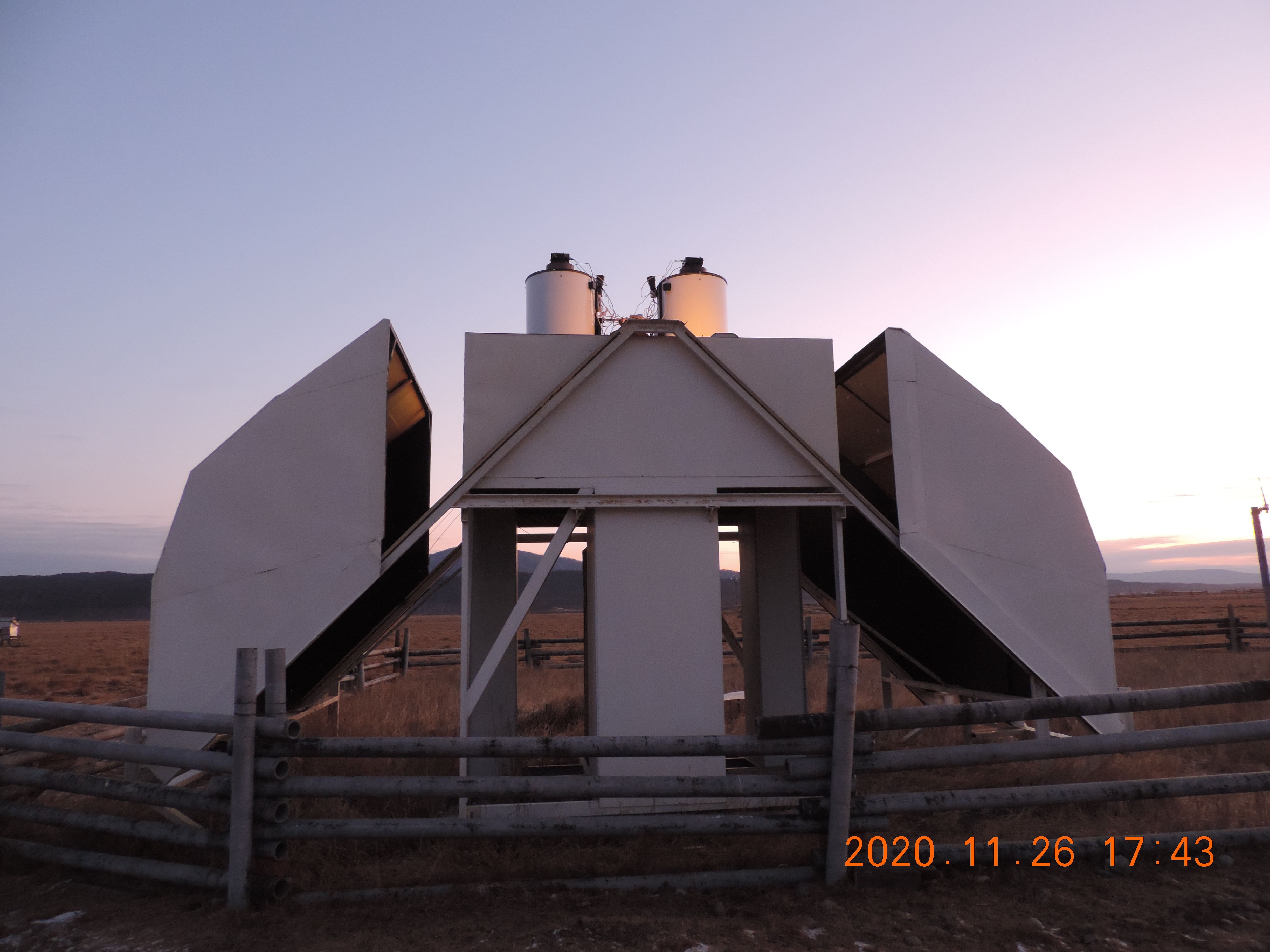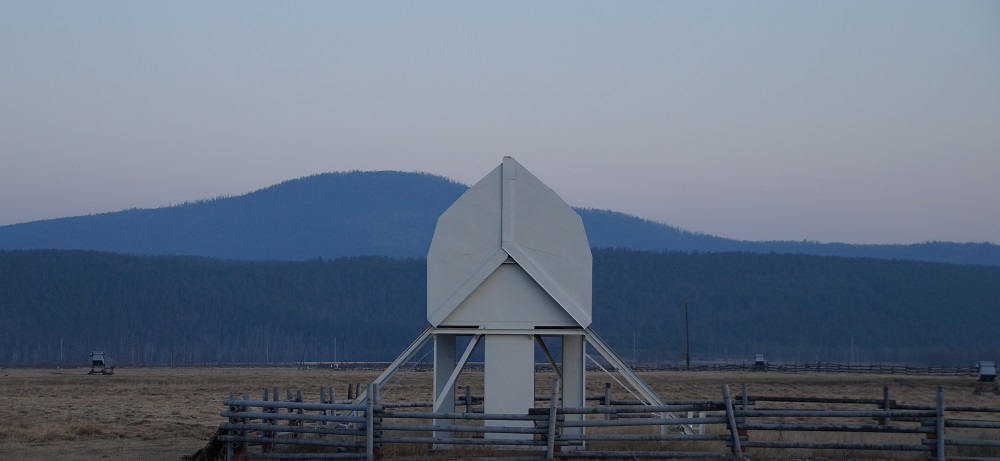In 2009, an astronomical pavilion was built here in collaboration with the SAI Moscow State University, where a two-tube robot telescope called the MASTER-400 was installed. The MASTER robot telescope is a highly effective tool for searching and studying optical transients, particularly for the discovery of optical counterparts of gamma-ray bursts.

The wide-field telescope MASTER-400 Tunka is a two-tube telescopic system (diameter 400 mm, aperture ratio of 1:2.5) featuring a total field of view of 8 square degrees. It is equipped with 16-megapixel cameras, a universal photometer with B, V, R, I filters and polarizers. Additionally, it is capable of conducting survey observations in white light. The two telescopes are mounted on an ultra-fast mount (with a pointing speed of up to 30 degrees per second), which does not require additional guiding instruments. The installation has an extra degree of freedom—when operating in “alert mode” for target designation, the tubes can be aligned in parallel, allowing for synchronous multi-color photometry of short-lived (on the order of seconds) or fast-moving objects. The viewing speed provided by a single MASTER-400 unit is 480 square degrees per hour for objects up to 20th magnitude.

All MASTER robotic telescopes of the global network, including the MASTER-Tunka telescope operating at the Moscow State University-ISU Astrophysical Complex at the Tunkinsky Astrophysical Center for Collective Use of Irkutsk State University, are equipped with identical own photometers (two full-frame CCD cameras, B, V filters, R, I Johnson-Bessel systems and two linear polarizers) and are controlled by identical proprietary software. Using identical equipment allows continuous observation of optical transients for 24 hours in identical photometric systems.
The MASTER-400 telescope robot as part of the MASTER Global Robotic Network has achieved outstanding results, becoming one of the most effective search engines in the world. MASTER telescopes August 17, 2017 independently discovered the optical counterpart of the kilonova (the result of the merger of neutron stars) MASTER OTJ130948.10-232253.3 / SSS17a caused by the decay of superheavy radioactive chemical elements formed in the expanding shell after the merger of neutron stars detected by the gravitational-wave detectors LIGO / Virgo17WGW. In fact, it was these observations that opened up a new science – gravitational-wave astronomy.
In November 2020, the MASTER-600 robotic telescope was put into operation at the Tunka Astrophysical Center, created by Moscow and Irkutsk State Universities. The telescope diameter is now 600 mm, i.e. one and a half times more than the previous one. Each of the two optical cameras has a field of view of 8 square degrees, so the speed of observing the sky increases by 2 times. The sensitivity of the telescope has increased by 6 times (about two magnitudes). Thus, the volume of the Universe available to astronomers has increased by 10 – 15 times, depending on the type of object! 36 megapixel fast CMOS receivers help with a larger field of view and sensor readout speed. Thus, the efficiency of the Tunka Astrophysical Center for ultrafast optical observations has increased up to 15-20 times, depending on the type of objects.

Since 2016, the MASTER Global Network of Robot Telescopes has become a world leader in the study of relativistic sources of gravitational-wave bursts LIGO / Virgo (Nature, 2017, 551, 85; Astrophysical Journal Letters. Vol. 848, pp. 12-71, 2017; Astrophysical Journal Letters vol. 850, n. 1, pp. L1, 2017), early optical observations of gamma-ray bursts (Nature, 2017, 547, 425), a leader in the study of promt optical radiation of gamma-ray bursts – the most powerful phenomena in the Universe (Troja, E .; Lipunov, VM et al., Significant and variable linear polarization during the prompt optical flash of GRB 160625B, Nature, Vol. 547, p. 425-427 (2017); Lipunov et al “Smooth Optical Self similar emission of gamma-ray bursts. ”APJ 2017, 845, 52L) and other phenomena of high-energy astrophysics (2 articles in Nature (impact factor 40) and 24 articles in leading journals with impact factor above 5 in 2 years).

